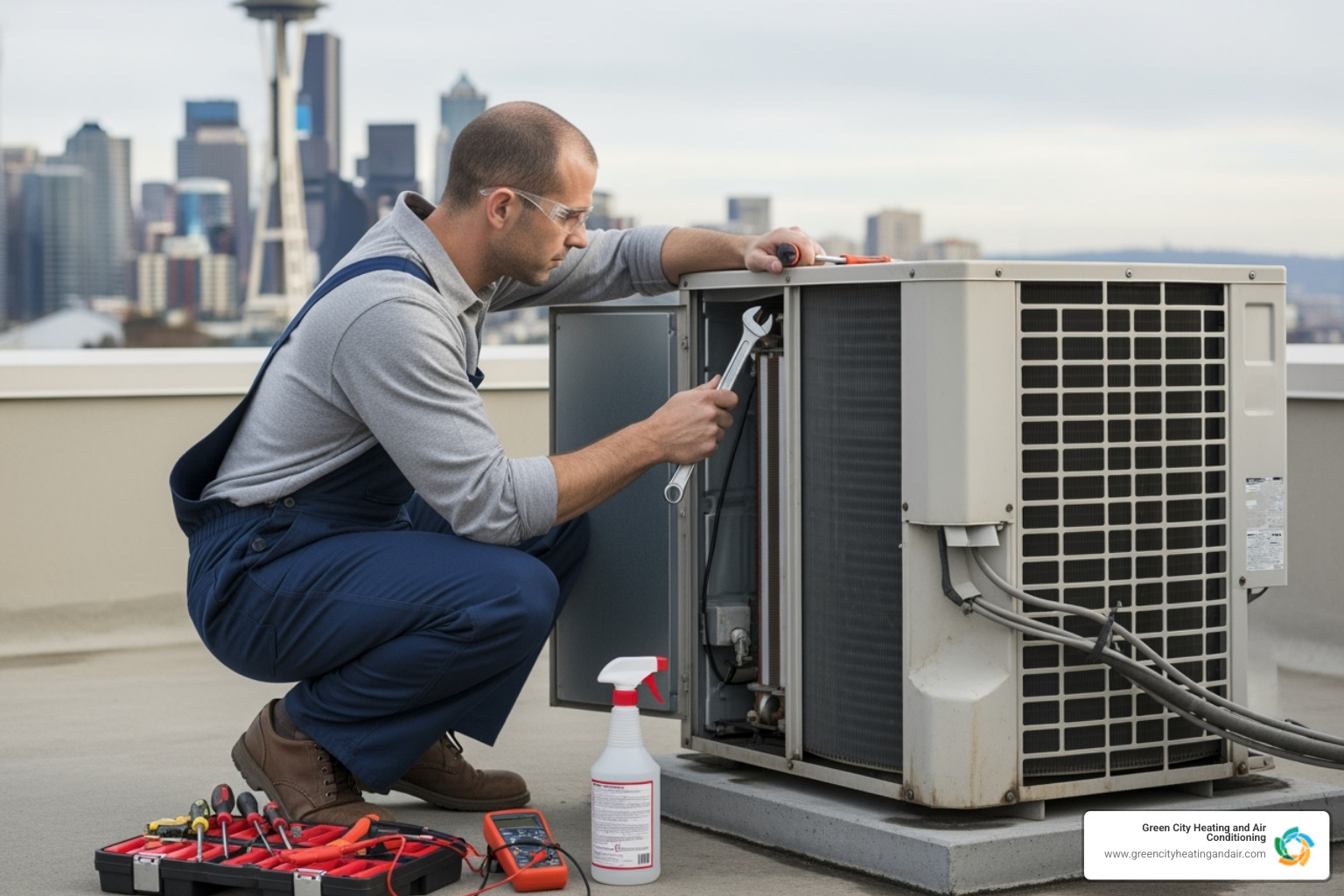Understanding What You'll Pay for AC Replacement
AC Replacement Cost for most homes runs from $5,500 to $16,000, with many homeowners investing around $8,500 for a complete system and professional installation. Your final price depends on unit type and size, efficiency (SEER), installation complexity, and any ductwork or electrical updates. Understanding these costs upfront helps you make an informed decision about one of your home's most important comfort systems.
Quick AC Replacement Cost Breakdown:
- Entry-level systems: $5,500 - $8,800
- Mid-range systems: $6,700 - $9,400
- High-end systems: $8,300 - $16,000
- Labor and installation: 30-50% of total cost
- Additional costs: Ductwork, permits, electrical upgrades
Because AC replacement is a major purchase, understanding these cost drivers helps you set a realistic budget and avoid surprises. The right system can provide decades of reliable cooling while potentially reducing your energy bills by 20-40% compared to older, inefficient units. Modern air conditioners also offer improved humidity control, quieter operation, and better air filtration than systems from even ten years ago.
When evaluating AC replacement cost, consider both immediate expenses and long-term value. A higher-efficiency system may cost more initially but can pay for itself through energy savings over its lifetime. Additionally, new systems come with manufacturer warranties that protect your investment, typically covering parts for 5-10 years and sometimes offering extended coverage options.
Below, we outline the key variables, when to repair vs. replace, and what to expect during installation. This comprehensive guide will help you steer the replacement process with confidence.
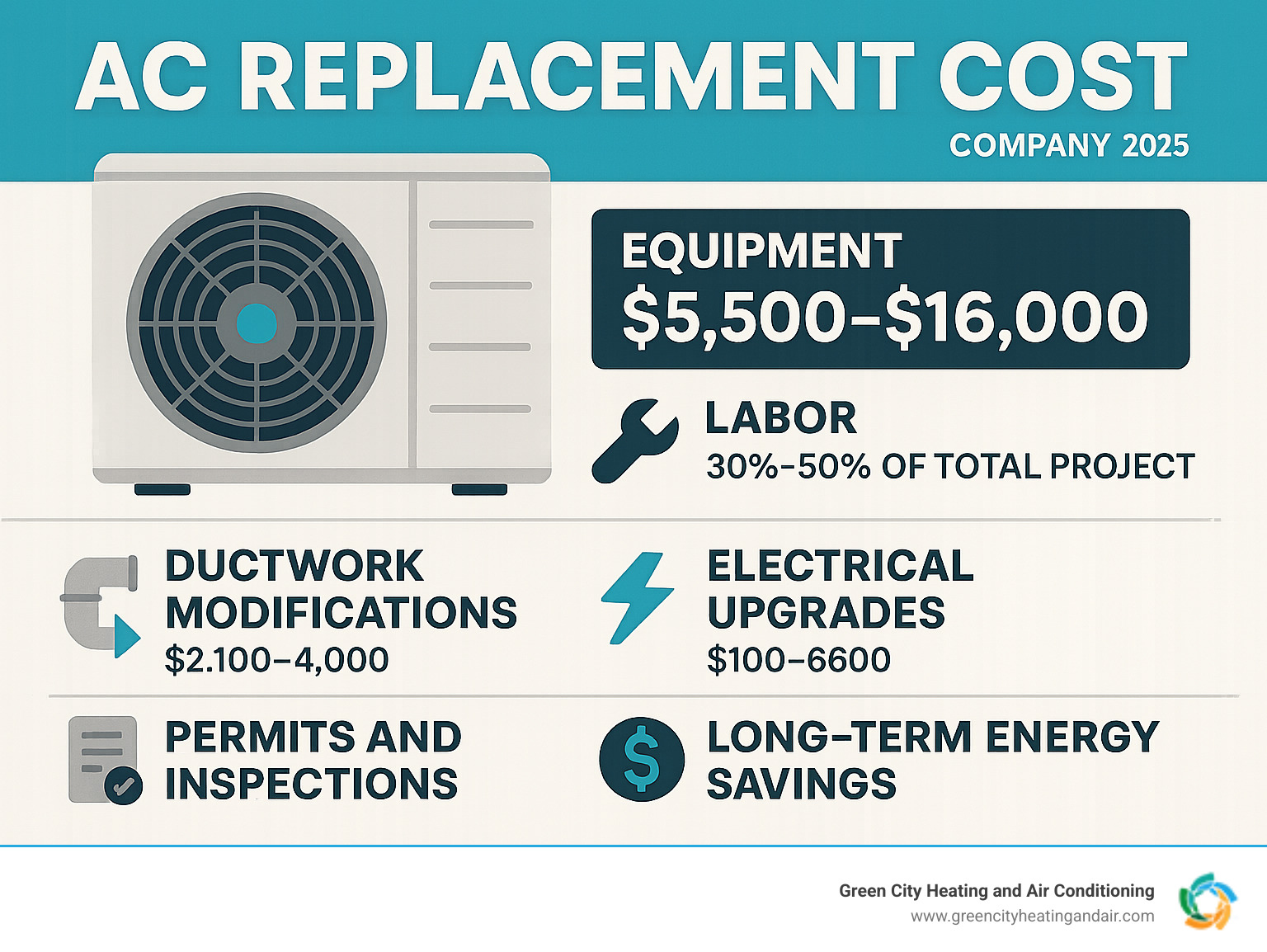
Breaking Down the Key Factors of Your AC Replacement Cost
This section details the variables that determine your final bill, helping you understand what goes into a professional quote and why prices can vary significantly between homes.
Understanding the Average AC Replacement Cost
Entry-level systems often run $5,500-$8,800; mid-range $6,700-$9,400; high-end $8,300-$16,000. Final pricing in King, Pierce, and Snohomish Counties varies by home and installation needs. These ranges reflect complete installation costs, including equipment, labor, and standard materials. The wide price range exists because every home presents unique challenges and opportunities for optimization.
Factors that push costs toward the higher end include premium brands, variable-speed technology, advanced filtration systems, and smart home integration. Lower-end systems still provide reliable cooling but may lack advanced features like humidity control or ultra-quiet operation. For local context and specific pricing in your area, see AC Replacement Cost in Seattle and AC Replacement Cost in Bellevue.
Unit Size (Tonnage & BTU)
Sizing is about cooling capacity (BTU/tons), not physical dimensions. One ton of cooling equals 12,000 BTUs per hour. Residential systems typically range from 1.5 to 5 tons, with most homes needing 2-3.5 tons. Undersized units run constantly, struggling to maintain temperature and wearing out prematurely; oversized units short-cycle, creating temperature swings, poor humidity control, and wasted energy.
A professional Manual J Load Calculation is the gold standard for sizing. This calculation considers your home's square footage, insulation levels, window placement, local climate data, and even the number of occupants. Proper sizing ensures optimal comfort, efficiency, and equipment longevity. For a rough estimate before your professional consultation, try this AC Size Calculator.
System Efficiency (SEER Rating)
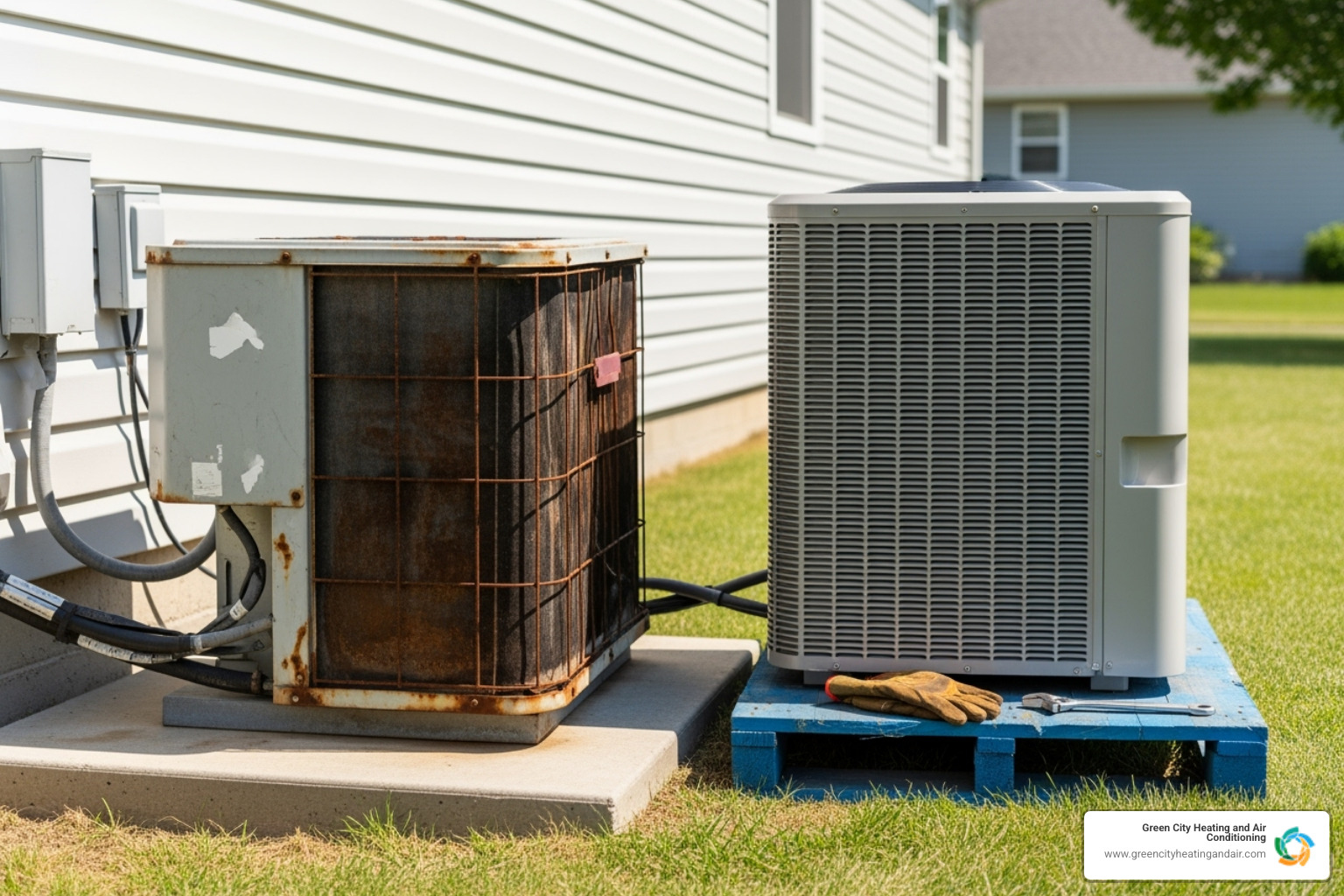
SEER (Seasonal Energy Efficiency Ratio) is your AC's efficiency rating (think MPG for cars). Washington requires at least SEER 14 for new systems, though many homeowners choose SEER 16-20 for better long-term savings. Higher SEER raises upfront cost but can lower utility bills over the system's lifespan. For example, upgrading from SEER 14 to SEER 18 might add $1,500-$2,500 to your initial investment but could save $100-$300 annually on cooling costs.
The newest SEER2 standards, implemented in 2023, provide even more accurate efficiency measurements by testing under conditions that better reflect real-world usage. These stricter standards mean today's systems are more efficient than ever before.
Labor and Installation Complexity
Installation typically makes up 30-50% of your total AC replacement cost. This includes safe removal of old equipment, proper electrical and refrigerant work, system calibration, and testing. Professional installation ensures your system operates at peak efficiency and maintains warranty coverage. We never subcontract; our in-house team ensures quality workmanship on every project.
Factors affecting installation complexity include attic or crawlspace access, distance between indoor and outdoor units, old equipment removal and disposal, and whether new concrete pads or line-sets are needed. Difficult access areas or second-story installations may require additional labor hours. Learn more about local installation considerations at AC Replacement Cost in Everett.
Ductwork Condition and Modifications
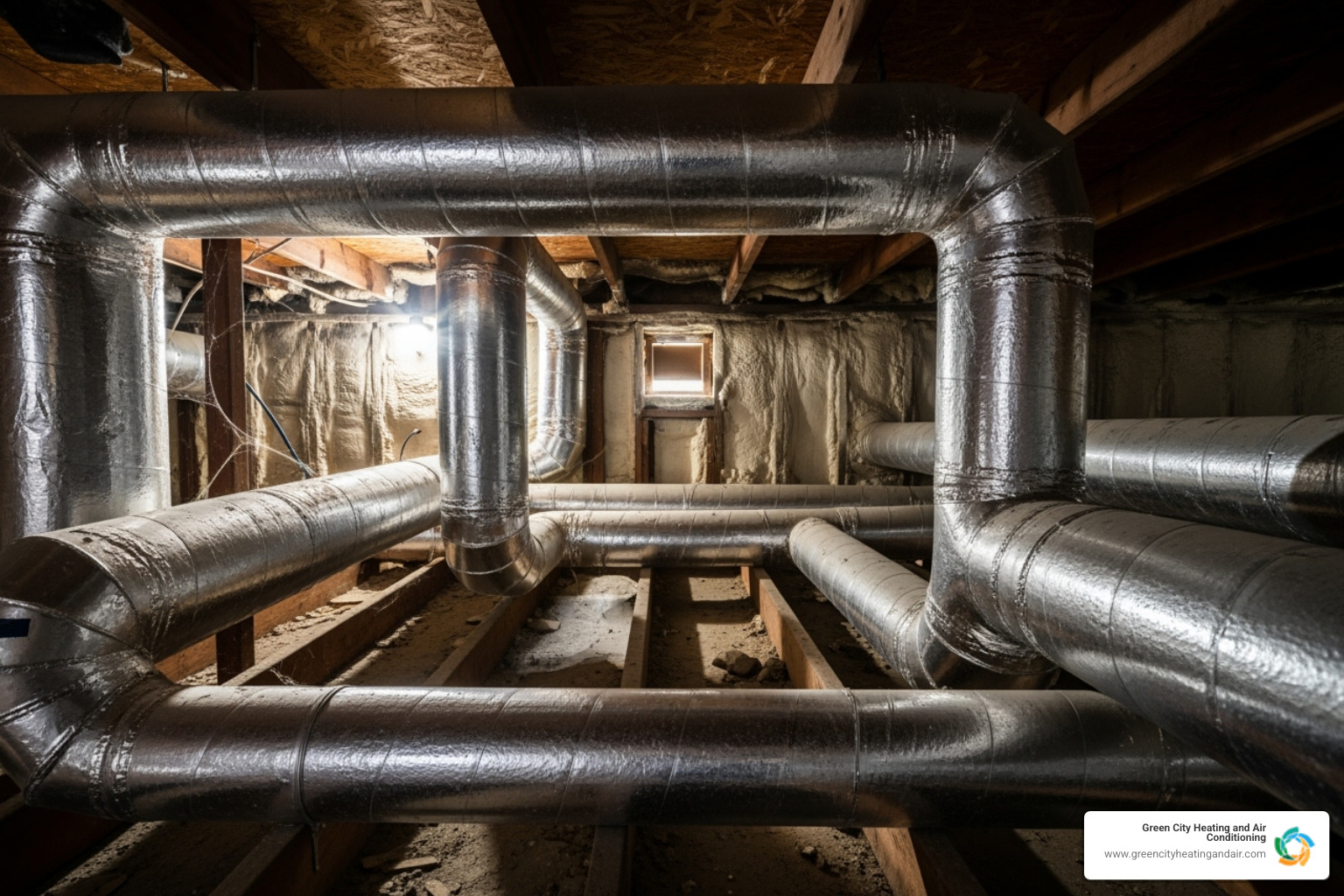
Leaky or undersized ducts can undermine even the best AC system, wasting 20-30% of cooled air before it reaches your rooms. Minor sealing and repairs may suffice for newer ductwork; full replacement can add about $2,100-$4,000 but helps your new system perform as designed. Properly sized and sealed ductwork ensures even cooling throughout your home and maximizes system efficiency.
Additional Factors in Your AC Replacement Cost
- Electrical upgrades: $100-$600 (older homes may need panel upgrades)
- Thermostat replacement: basic models start at $150; smart thermostats $250-$500
- Permits and inspections: required by most jurisdictions, typically $100-$300
- Condensate drain modifications: pumps typically around $370
- Air quality additions: UV lights, advanced filtration, or humidity control systems
Central Air vs. Ductless Mini-Splits: A Cost Comparison
When reviewing your AC replacement cost, you'll generally choose between central air (with ducts) and ductless mini-splits (no ducts). The right fit depends on your home's infrastructure, your comfort goals, and budget.
Central Air Conditioning Systems
Provides whole-home cooling via existing ductwork; ideal if ducts are already in good shape.
Pros:
- Uniform, whole-home comfort
- Hidden equipment; integrated filtration
Cons:
- Requires ducts (costly to add in homes without them)
- Less flexible zoning compared to mini-splits
Ductless Mini-Split Systems
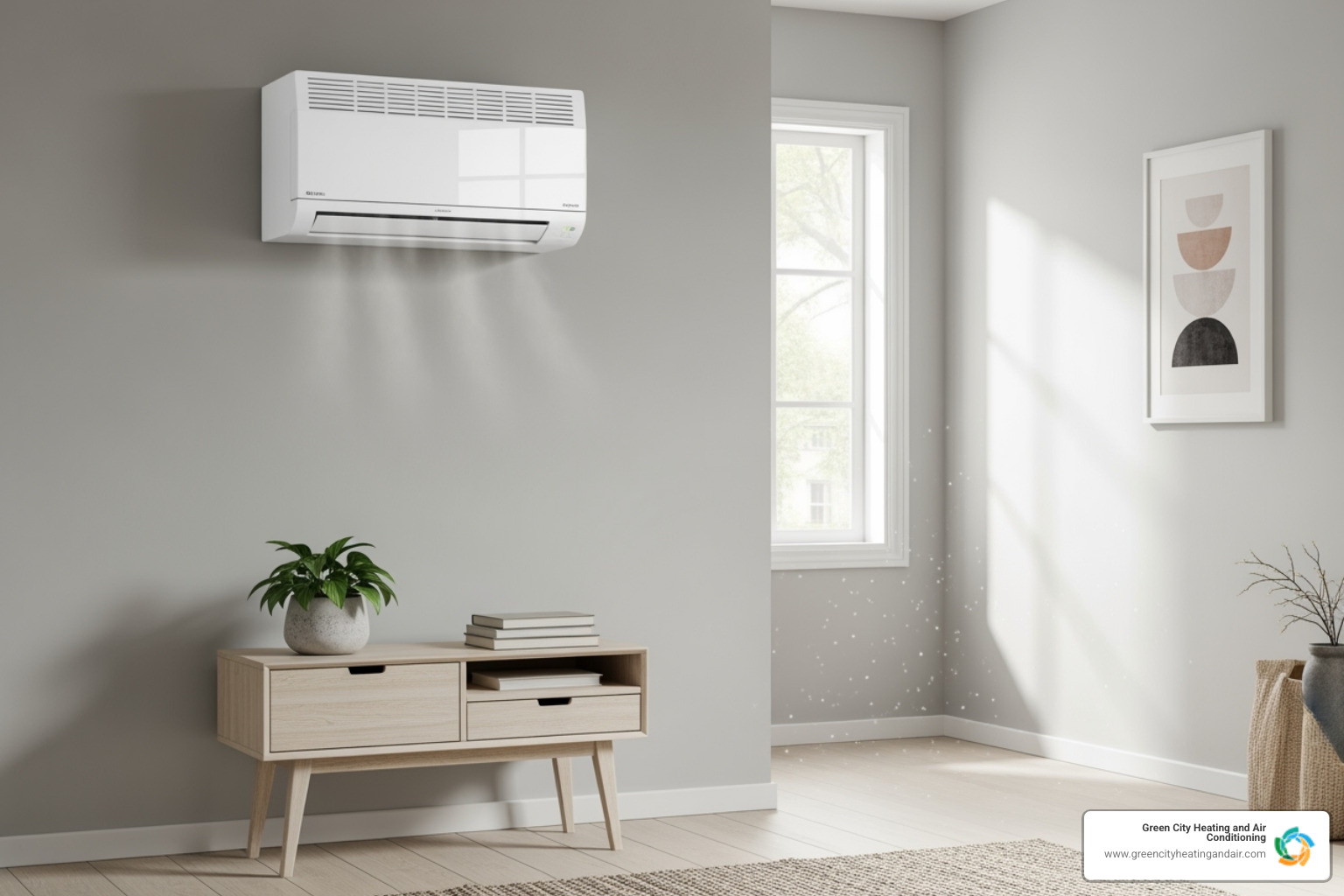
A great solution when you lack ductwork or want zoned comfort; single- or multi-zone setups are available.
Pros:
- Zoned control; cool only the rooms you use
- No ducts to install or maintain; often very efficient
- Many models heat and cool
Cons:
- Higher upfront cost if many indoor heads are needed
- Indoor heads remain visible
The Big Decision: Repairing vs. Replacing Your Air Conditioner
Knowing when to fix versus replace protects both comfort and budget.
When to Repair Your AC
- Minor issues like a clogged drain line ($80-$250) or failed capacitor ($150-$400)
- System is under 10-12 years old
- Parts are covered by warranty (you may pay only labor)
When to Replace Your AC
- Frequent breakdowns or major parts: compressor ($1,000-$3,000+) or evaporator coil ($700-$2,500+)
- Repair approaches 50% of new system price (the 50% rule)
- Unit is 12-15+ years old
- Uses phased-out R-22 freon
- Energy bills are rising despite regular maintenance
| Scenario | When to Repair | When to Replace |
|---|---|---|
| System Age | Under 10-12 years | Over 12-15 years |
| Repair Cost | Under 50% of replacement cost | 50% or more of replacement cost |
| Frequency | Occasional issues | Multiple repairs per year |
| Efficiency | Bills stable, good cooling | Rising bills, poor performance |
| Refrigerant | Modern refrigerant (R-410A) | Uses R-22 freon |
Breaking Down the Key Factors of Your AC Replacement Cost
Quick recap of the biggest cost drivers so you can compare quotes confidently.
Understanding the Average AC Replacement Cost
Typical installed pricing: entry-level $5,500-$8,800; mid-range $6,700-$9,400; high-end $8,300-$16,000. For local context, see AC Replacement Cost in Seattle and AC Replacement Cost in Bellevue.
Unit Size (Tonnage & BTU)
Right-sizing avoids short cycling and discomfort. A Manual J is best; for a rough idea use this AC Size Calculator.
System Efficiency (SEER Rating)
SEER is like MPG; Washington requires at least SEER 14. Higher SEER costs more upfront but can reduce long-term energy spend.
Labor and Installation Complexity
Expect 30-50% of your total for professional installation. Site access, removal of old equipment, and pad/line-set work can affect price. See AC Replacement Cost in Everett.
Ductwork Condition and Modifications
Duct fixes or replacement (often $2,100-$4,000) can be crucial for comfort and efficiency.
Additional Factors in Your AC Replacement Cost
- Electrical upgrades: $100-$600
- Thermostat upgrades
- Permits/inspections
- Condensate pump: about $370
Central Air vs. Ductless Mini-Splits: A Cost Comparison
Short version: use existing ductwork with central air for whole-home, uniform cooling; choose ductless for targeted, zoned comfort without ducts.
Central Air Pros: whole-home comfort, hidden equipment. Cons: needs ducts, less zoning flexibility.
Ductless Pros: zoned control, no ducts, high efficiency, many heat too. Cons: visible indoor heads; multi-zone setups can raise upfront cost.
The Big Decision: Repairing vs. Replacing Your Air Conditioner
Fast guidance:
- Repair if the problem is minor ($80-$400 typical for clogs/capacitors), the unit is under 10-12 years, and parts are under warranty.
- Replace if repairs are frequent, a major component fails (compressor/coil), the repair hits the 50% rule, the unit is 12-15+ years old, or it uses phased-out R-22 freon.
- Watch energy bills: persistent increases often signal declining efficiency in older systems.
Breaking Down the Key Factors of Your AC Replacement Cost
In brief, your total comes from:
- Equipment level: entry $5,500-$8,800; mid $6,700-$9,400; high $8,300-$16,000 (installed)
- Size: correct tonnage via Manual J; rough checks with this AC Size Calculator
- Efficiency: at least SEER 14 in Washington; higher SEER can trim long-term bills
- Labor: 30-50% of total; access and complexity matter; see AC Replacement Cost in Everett
- Ductwork: sealing or replacement ($2,100-$4,000 typical) may be needed
- Local context: AC Replacement Cost in Seattle, AC Replacement Cost in Bellevue
Central Air vs. Ductless Mini-Splits: A Cost Comparison
Summary: central air fits homes with good ducts and a single, whole-home setpoint. Ductless mini-splits excel where ducts are absent or zoning is a priority. Central air is discreet but less flexible; ductless is visible indoors but highly efficient and zones rooms independently.
The Big Decision: Repairing vs. Replacing Your Air Conditioner
Rule of thumb: repair for small fixes on younger systems; replace for frequent failures, major components, or units 12-15+ years old. If your system uses phased-out R-22 freon or your energy bills keep climbing, replacement usually delivers better long-term value.
More Blogs
Latest
insights and tips
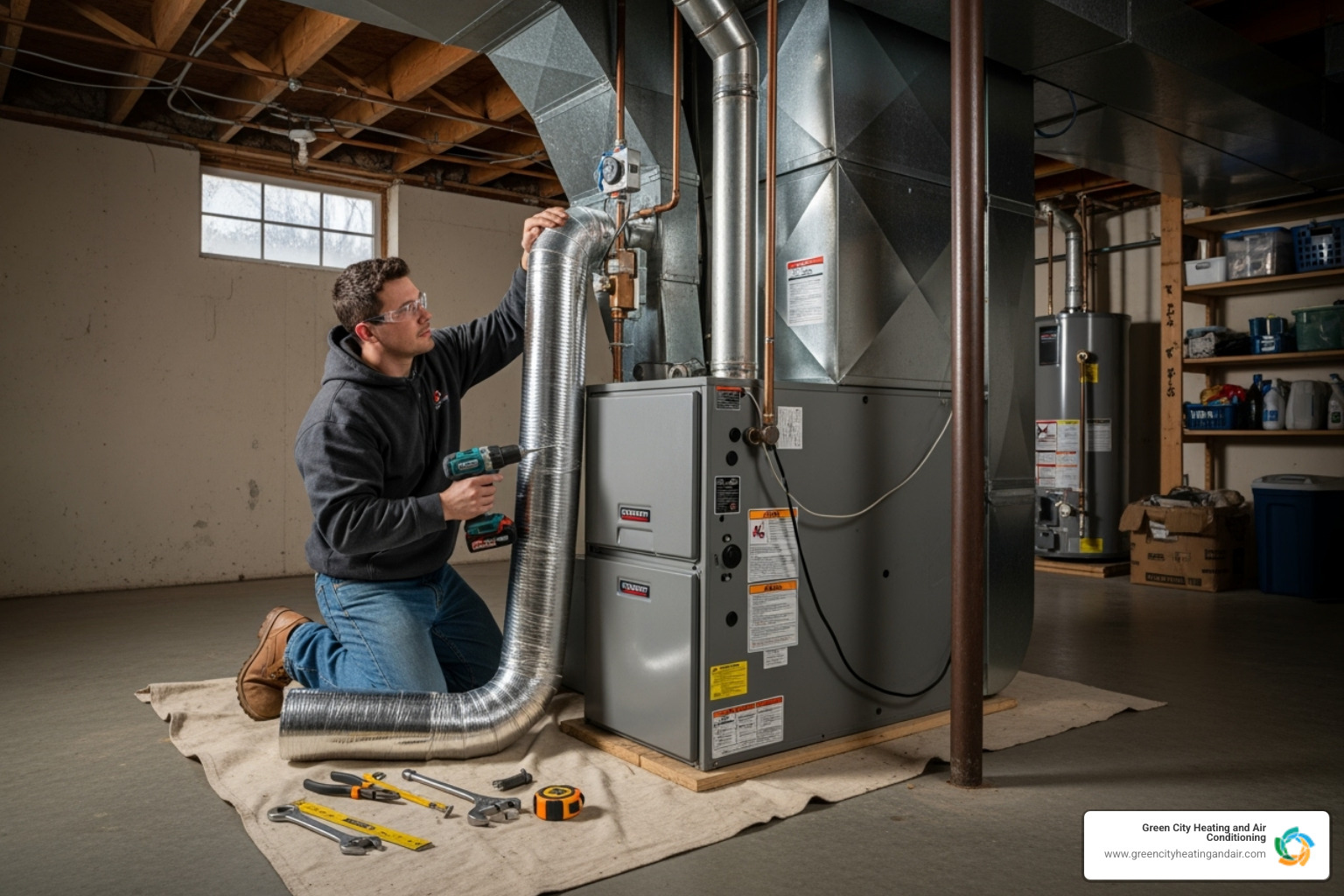
Warmth Unleashed: The Ultimate Seattle Furnace Installation Handbook
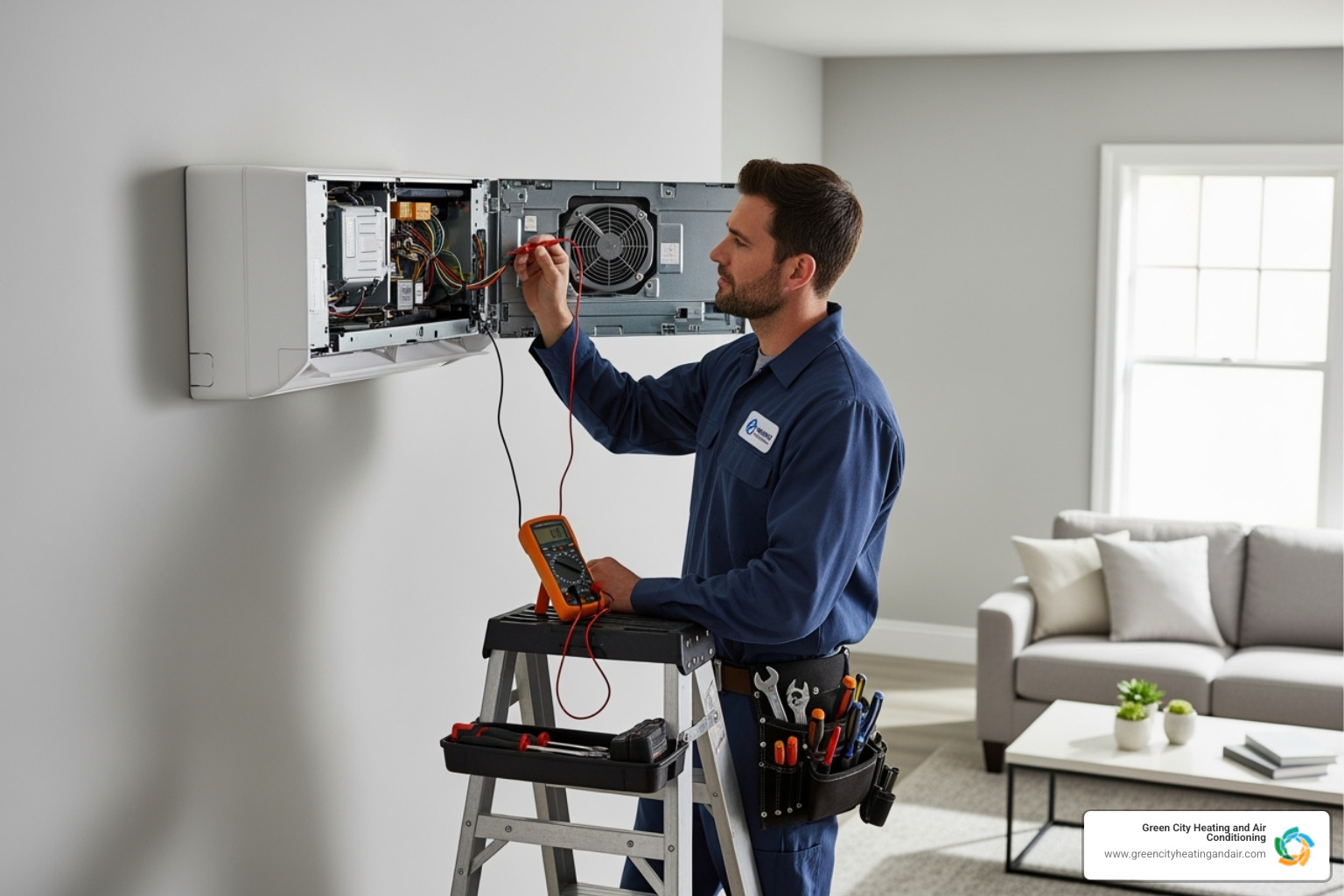
Emergency Ductless AC Repair in Bellevue: Get Your Cool Back Fast
